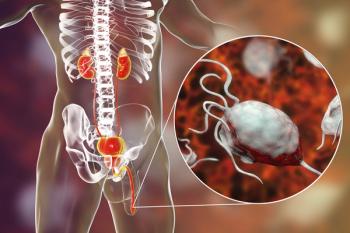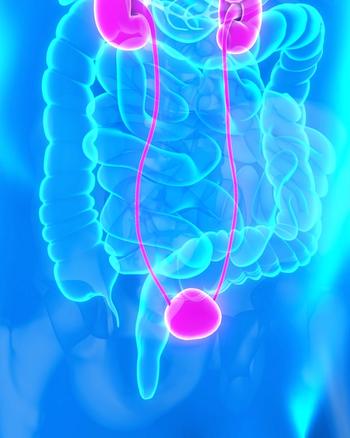
- ONCOLOGY Vol 13 No 6
- Volume 13
- Issue 6
Stable PSA Periods After adiation Therapy May Predict Disease-Free Survival
Like pretreatment prostate-specific antigen (PSA), post-treatment PSA nadirs may have prognostic significance in patients with prostate carcinoma, according to data presented by Timothy S. Boyd, MD, Robert C. Orth, BS, Wolfgang A. Tomé,
Like pretreatment prostate-specific antigen (PSA), post-treatment PSA nadirs may have prognostic significance in patients with prostate carcinoma, according to data presented by Timothy S. Boyd, MD, Robert C. Orth, BS, Wolfgang A. Tomé, PhD, and Mark A. Ritter, MD, PhD, of the Department of Human Oncology at the University of Wisconsin at the American Society for Therapeutic Radiology and Oncology (ASTRO) meeting.
Assuming that a stable PSA period occurring many years after treatment equates with cure, the investigators focused on the extent to which the probability of long-term cure decreased as the time between treatment and the observed stable PSA interval decreased.
The Wisconsin researchers reviewed the PSA records of 296 patients with prostate cancer initially treated with radiation therapy over a 9-year period. The final selection criteria for the study included definitive treatment with irradiation, no post-treatment use of antiandrogen therapy, and at least a 1-year period of stable PSA values (defined two or more values below 1.0 or 0.5 ng/mL).
Any subsequent deviation from these criteria was defined as the onset of biochemical failure. Clinical failures were defined by physical examination and biopsy or imaging. From the time of completion of each of the stable PSA periods, actuarial biochemical disease-free survival was then calculated.
Study Findings
Patients with stable PSA periods below 1.0 ng/mL beginning 1 to 2 years after radiation therapy had a 5-year postinterval control rate of 69%, increasing to 100% for stable PSA periods beginning 3 to 4 years after treatment. Patients with stable PSA periods below 0.5 ng/mL beginning 1 to 2 years after therapy had a 5-year postinterval control rate of 92%, increasing to 100% for stable PSA periods beginning 2 to 3 years after treatment. Patients in the nadir cohort achieved a 5-year post nadir control rate of only 72% for nadirs £ 1.0 ng/mL and a control rate of 73% for nadirs £ 0.5 ng/mL.
Therefore, the investigators concluded that PSA stability after radiation is prognostically significant and may be useful as a study end point and in counseling patients.
Articles in this issue
over 26 years ago
Mismatched Bone Marrow Transplants Effective in Acute Leukemiaover 26 years ago
Sex Hormone Levels May Help Predict Breast Cancer Riskover 26 years ago
Novel Cellular Agent Shows Promise in Treating AMLover 26 years ago
Some Medicare Managed Care Plans Restrict Mammogramsover 26 years ago
ASCO Urges Congress to Increase NIH Funding by at Least 15%over 26 years ago
Institute of Medicine Report Criticizes Quality of Cancer CareNewsletter
Stay up to date on recent advances in the multidisciplinary approach to cancer.


















































































